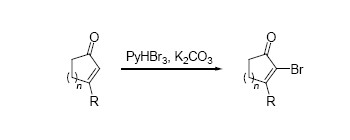| [1] Nicolaou, K. C.; Denton, R. M.; Lenzen, A.; Edmonds, D. J.; Li, A.; Milburn, R. M.; Harrison, S. T. Angew. Chem. Int. Ed. 2006, 45, 2076. [2] Nicolaou, K. C.; Li, A. Angew. Chem. Int. Ed. 2008, 47, 6579. [3] Shipe, W. D.; Sorensen, E. J. Org. Lett. 2002, 13, 2063. [4] (a) Johnson, C. R.; Adams, J. P.; Braun, M. P.; Senanayake, C. B. W.; Wovkulich, P. M.; Uskokovic, M. R. Tetrahedron Lett. 1992, 33, 917; (b) Ruel, F. S.; Braun, M. P.; Johnson, C. R. Org. Synth. 1998, 75, 69. [5] Sha, C.-K.; Huang, S.-J. Tetrahedron Lett. 1995, 36, 6927. [6] (a) Dunn, G. L.; Dipasquo, V. J.; Hoover, J. R. E. J. Org. Chem. 1968, 33, 1459; (b) Smith, A. B.; Branca, S. J.; Guaciaro, M. A.; Wovkulich, P. M.; Korn, A. Org. Synth. 1983, 61, 65. [7] (a) Bose, G.; Barua, P. M. B.; Chaudhuri, M. K.; Kalita, D.; Khan, A. T. Chem. Lett. 2001, 290; (b) Ramanarayanan, G. V.; Shukla, V. G.; Akamanchi, K. G. Synlett 2002, 2059; (c) Ye, C.; Shreeve, J. M. J. Org. Chem. 2004, 69, 8561; (d) Kim, M.; Park, I.-H. Synthesis 2004, 2641; (e) Jyothi, D.; HariPrasad, S. Synlett 2009, 2309; (f) Ngatimin, M.; Gartshore, C. J.; Kindler, J. P.; Naidu, S.; Lupton, D. W. Tetrahedron Lett. 2009, 50, 6008. [8] (a) Djerassi, C.; Scholz, C. R. J. Am. Chem. Soc. 1948, 70, 417; (b) Fieser, L. F.; Fieser, M. Reagents for Organic Synthesis, Wiley, New York, 1967, p. 967; (c) Ed.: Paquette, L. A. Encyclopedia of Reagents for Organic Synthesis, Vol. 6, Wiley, New York, 1995, pp. 4738 and 4370.[9] White, J. D.; Grether, U. M.; Lee, C.-S. Org. Synth. 2005, 82, 108. |
